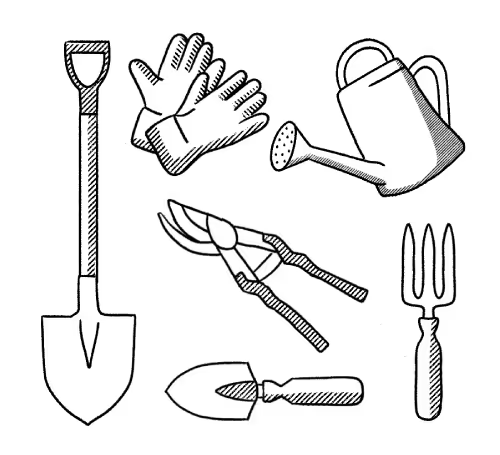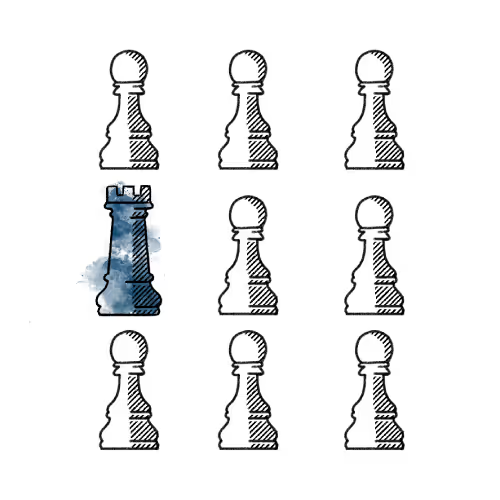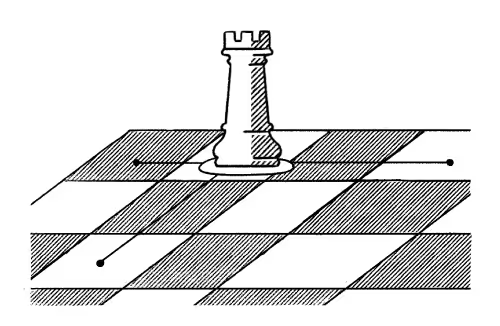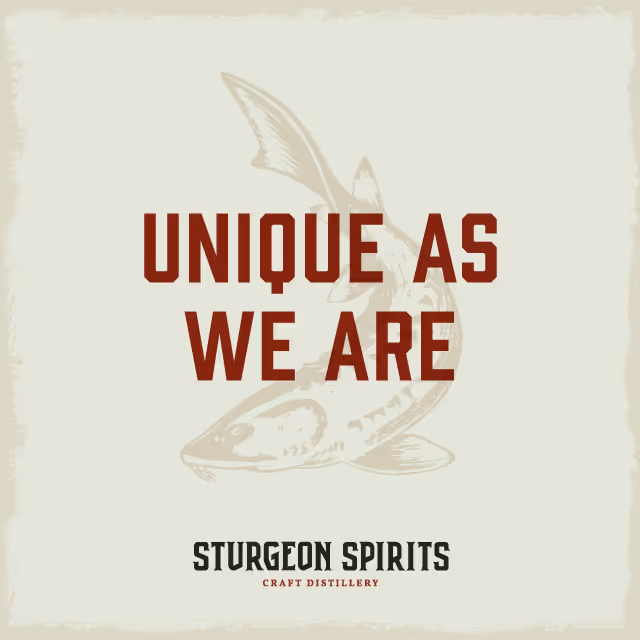
Think of your favorite brands and businesses. Chances are, it’s not the product/service you love — after all, there are multiple options for almost everything. In most cases, you love how that brand or product makes you feel.
You may have had a great experience with a sales rep. Or you associate the brand with a fun night out with friends or a compliment you received. Whatever the case, an emotional connection to a business or product drives brand loyalty and sales.
But building that emotional connection is difficult for new brands breaking into crowded markets. And a positive experience can easily be forgotten after just one negative interaction. That’s where brand activation comes in. A brand activation strategy focuses on creating strong emotional connections with customers to shift perceptions and differentiate your brand.
Let’s dive in.

Your brand identity embodies your business, encompassing visual, auditory, and emotional elements. It's how your brand presents itself to the world, encompassing your company's name, logo, tagline, color palette, tone of voice, and even how your brand engages with its customers.
Your brand identity is the "face" of your brand, and it's how customers recognize and differentiate your business from competitors. It’s important because that recognition leads to sales and long-term customer loyalty.
When you see the green Starbucks siren or McDonald’s golden arches as you drive along, you automatically know what the brand is, what products you could get there, and the quality you’re getting without much thought.
Similarly, a new mom buying diapers for the first time will likely gravitate toward a well-known brand like Huggies. Even if she’s never bought diapers before, there’s already a level of trust established due to the caring and reliable brand identity that Huggies has spent years developing.
Whether you're a small, up-and-coming brand or an established one, the elements that make up your brand identity play a critical role in conveying your message and capturing the attention of your target audience. All these components work together to tell your brand's unique story, from the colors you choose to the fonts you use and even the language you employ in your marketing efforts. Consistency is critical when it comes to your brand identity. Using the same visual and auditory elements across all of your channels, you can build trust with your customers and establish a recognizable and memorable presence in your industry. Whether on your website, social media profiles, or advertising campaigns, maintaining consistency in your branding helps solidify your brand's identity and strengthen your overall message.

Creating a brand identity requires a combination of research, creativity, and strategy. Here are some steps you can take to create a strong brand identity for your business:
Before creating a brand identity, it's essential to understand your target audience and your competitors, which requires research. This research and understanding will help you create a brand identity that resonates with your audience and sets you apart from competitors.
Start by researching your target audience's preferences, needs, and desires. Industry publications and research organizations (like the Pew Research Center) are a great place to start. You can get personal insights through customer reviews, comments, sales calls, and surveys.
What do they offer? What do you not? What are customers saying about their brand on social media? These insights can help you find your place in the market.
And lastly, do some internal research too. Honing in on why you started in a particular industry, what you hope to help customers accomplish, and what employees love about your company are key to creating a brand identity.


Once you've researched, it's time to start defining your brand personality.
Just like every person has a different and unique personality that sets them apart, you need to figure out how to differentiate your brand through appearance, sound, and actions.
Start by asking yourself a few questions:
- If your brand were a person, how would they talk and act?
- What three words would you want someone to use to describe your brand?
- What other brands do you like or want to emulate and why?
By answering these questions, you can hone in on your unique selling points and the story you want to tell. Then, match those personality traits with colors, visuals, and message points that align.

Once you craft the brand personality, you need to create the brand identity that showcases that personality — and document it for lasting brand strategy success.
We like to call this the “identity pitch.”
Your identity pitch is an overall summary of your brand identity. It includes details about how you’re positioning yourself in the industry and your unique selling point, as well as color codes, sizing, fonts, and messaging guidelines.
Since we’re all about visual examples, we always like to include mock-ups of what various brand touchpoints might look like — such as a social media ad, print ad, and packaging as a stress test.
This document will be the foundation of your brand identity and help you maintain consistency across all channels. Employees across departments and various partners can use it to ensure everything is aligned.


Your brand identity is more than just colors, fonts, and logos; it's a vital part of your ongoing brand strategy. Everything you do should tie back to that brand identity.
As you take on new marketing initiatives, they should align visually with all other elements of your brand to create a cohesive experience for your customers. New products, services, and channels should connect with that brand positioning statement and core values that you discovered while building your brand identity.
All in all, look at your overall marketing and business goals and see how your brand identity ties into those goals.

When developing your brand identity, a creative team can help you think outside the box and bring your brand identity to life.
A creative agency like Quill Creative Studio is full of artists, designers, and creative experts who’ve spent years honing their craft. We understand the importance of a cohesive and compelling brand identity. Our team of experts can help you develop and execute a brand strategy that aligns with your business goals and resonates with your target audience. By leveraging our knowledge and expertise, you can take your brand to the next level and stand out in a crowded marketplace. They can bring your vision and notes to life in ways you never thought possible.
You’ve got tons of things on your plate. A creative agency can take on the design and visual creatives, so you don’t have to. From the initial development to ongoing implementation and consistency, working with an agency can free you up to focus on other urgent tasks. It can also help alleviate the stress of branding mistakes.

We’ve had the opportunity to work with many amazing brands to develop their brand identities. We want to highlight just a few to showcase how the visuals and branding tell their story and differentiate the brand from competitors.
The Waters is a premier and historic yacht club and event center in Wisconsin. The landmark venue already had an excellent reputation, so our main goal was to elevate and refine its existing branding.
We focused on a clean, balanced, modern layout with elements inspired by the natural surroundings and the building itself. Even the color scheme includes a variety of blue hues, pulling from the waterfront and sky.
Overall, the elegance and simplicity of the branding capture what guests can expect when they visit the property.


Castle Pierce has been a commercial packaging and printing leader for over 100 years. As they looked to update their brand identity, we wanted to highlight the history of success while also looking toward the future.
As we developed the brand identity, we focused messaging and positioning around two main differentiators — unstoppable responsiveness and their proven history of performance.
Visuals and imagery include past packaging and big-name brands they’ve worked with, as well as messaging that focuses on legacy, value, and generations of success.

Momentum Carnivore Nutrition is a raw pet nutrition brand that wanted to compete on a national scale in a crowded market.
The overall goal of the brand identity was to feel celebratory and fun. We wanted the visuals to reflect that good nutrition and time with your pet is worth celebrating.
With that in mind, we use bright colors and a consistent design element reminiscent of confetti. Messaging also hints at fun, celebration, and health.

Once you've created your brand identity, it's essential to maintain it. Here are some tips for maintaining your brand identity:

Consistency is key to building a solid and recognizable brand identity. Ensure that all brand assets, messaging, and customer interactions remain consistent across all channels.
First and foremost, share that identity pitch with any and all employees and brand partners. That way, everyone is working from the same playbook.
Keep ongoing documentation of where your logo and branding are being used as much as possible. That includes your owned channels, as well as partnerships and sponsorships. An ongoing record makes it much easier to make changes and audit for any brand identity discrepancies.
Speaking of audits — you should do brand consistency audits regularly. We suggest quarterly. Review all platforms and content, both digital and print, to make sure everything is on brand and aligned.



Listen to customer feedback, track goals, and adjust your brand identity if necessary.
While you don’t want to change your entire brand identity based on every little comment or changing trend, ongoing feedback will help you determine if you’re differentiating yourself properly and if your identity resonates with consumers.
Especially in the age of social media, customers will tell you if they think something is off or if you’re not coming across as intended. Plus, you can track analytics like mentions, website views, and overall sales to see if you’re hitting your goals as planned.
Your brand identity should follow suit as your business changes and shifts priorities. Generally, that means minor shifts and updates, but large-scale company changes could also mean a complete brand overhaul.


You don't want to get lost in what everyone else is doing. Don't do it if it doesn’t feel right for your brand or aligns with your brand positioning.
That goes back to what we said about thinking big picture about your brand. You don’t want to jump on every trend. Rather, blaze your own trail and embrace what makes you unique in the space.

A strong brand identity is crucial for success in today's competitive business landscape. By implementing the steps outlined above and partnering with a creative agency like Quill Creative Studio, you can create a brand identity that truly speaks to your target audience and sets you apart from your competitors.
Remember, consistency is critical. You can establish trust and build a loyal following by maintaining a cohesive and recognizable brand identity across all of your channels.
But creating a brand identity is not a one-time task. It's an ongoing process that requires listening to customer feedback and adapting to the ever-changing marketplace. By continually refining and evolving your brand identity, you can ensure that your business remains relevant and resonates with your customers for years to come.
Contact us at Quill Creative Studio to learn more about how we can help you create a compelling brand identity that drives business growth and success.
A brand strategy is a long-term plan for how you want customers to perceive your brand. It encompasses the who, what, where, when, and why of your company’s story, voice, values, and overall visual look.

An effective brand strategy is based on a deep understanding of your business's strengths, purpose, and opportunities for differentiation within your target market.
Architects and contractors use blueprints to create a complete and functional building. Similarly, Quill Creative Studio crafts brand strategies that serve as the blueprint for a cohesive experience for every customer interaction with your brand.
Just like blueprints help guide the building process at every stage, your brand strategy helps guide your business decisions, messaging, and creatives every step of the way.
A well-crafted brand strategy informs design decisions which, when used consistently, increase brand awareness and recognition, making it easier for potential and past customers to find and choose your business.
A brand strategy sets the stage for visual identity development, which includes logos, fonts, and other key visual details. These graphical elements are carried across platforms and touchpoints so that customers can easily recognize and engage with your brand at every touchpoint.


A brand strategy helps your business stand out from competitors by communicating your brand purpose — and visually differentiating your brand in a crowded market.
While you may sell a similar product or service as another company, your brand strategy hones in on what’s unique about your offering and provides guidelines on how to express that so you stand out.
Your brand purpose should resonate with your target audience’s needs, preferences, and aspirations. Whether it's saving time, solving a problem, or delivering superior quality, it's not just about being different. It’s about being different in a way that actually matters to your customers.
When your brand purpose and promise align with the values and desires of your target audience, it becomes a powerful motivator for them to choose your brand. This alignment fosters a deeper connection and loyalty.

Consistent, compelling, and organized branding builds trust and credibility with your customers, increasing loyalty and repeat business.
Your brand strategy gives everyone working with your brand — your marketing team, customer support, leadership, etc. — a shared understanding and guidelines to make decisions off of. This shared understanding helps ensure that every touchpoint is aligned and that your brand promise is consistently fulfilled.
Consistency in messaging and design reinforces a clear and recognizable brand image. (Easy-to-follow brand guidelines can help you achieve this consistency.)
That consistency helps customers feel secure in engaging with your brand. They don’t have to question whether or not they’ll get the same superior service, quality, or experience; there’s just an underlying trust and recognition that they will.
.avif)

A strong brand strategy can create a foundation for long-term growth and success by helping you build brand equity.
Brand equity, which focuses on the perceived value and reputation of a brand, is a significant driver of long-term success. As brand equity grows, consumers are more likely to choose the brand over competitors, contributing to sustained market share and revenue growth.
However, markets are dynamic. Your business is bound to change as consumers, technology, and competition changes. Your brand strategy allows a brand to evolve without losing its core identity.
Markets are dynamic, and businesses must adapt to changes in consumer behavior, technology, and competitive landscapes. A dynamic brand strategy provides the roadmap and you need to evolve without losing your core identity.
This adaptability ensures that the brand remains relevant and resonant with changing consumer needs and preferences, contributing to long-term viability.
When those traits are front and center, it makes it easier to make critical business decisions without losing what makes your brand memorable. And because customers already trust you and share in your vision, they’re more likely to follow you through business pivots and changes.

A great brand strategy will save you money and pay for itself over time by helping you to maximize your marketing budget and reduce wasteful spending.
Your strategy helps you identify the most effective marketing channels and messages for reaching the target audience. By understanding the preferences and behaviors of your audience, you can allocate your marketing budget more efficiently.
These focused marketing campaigns reduce the risk of spending resources on campaigns that do not resonate with your audience, ultimately saving money.
Plus, a clear framework for decision-making, messaging, and creatives streamlines processes, improving overall internal efficiency. Clarity in operations reduces the likelihood of mistakes or missteps that could lead to financial losses, lawsuits, costly corrections.
It’s important to note that you must take a strategic approach to your brand building to set yourself up for success from the beginning to save you time, money, and energy in the long run.

If you’re starting your business or looking to hone your brand strategy,
begin with a brand strategy that has what it takes to last.

Start by evaluating your current brand messaging, visual identity, and customer perception. Where did your business or product idea come from? Why are you here? Focus on big-picture questions to help you hone in on your brand story.
After you’ve taken a look inward, take some time to focus outward on your customers and competitors.
Research existing or target customers to better understand what resonates with them. How do they make buying choices? What key challenges are they facing? A combination of online research and direct insights from customers through surveys, reviews, and personal conversations can help you understand where your brand stands and where it needs to go.
Your competitors are also a goldmine of information. What are they doing well? What’s not working? Any similarities in colors, visuals, and messaging? Spend some time diving into what they do and how they do it. While you never want to copy another brand, this can help you figure out what sets your brand apart and help you tap into an unfulfilled market.



With the research done above, you should be well on your way to developing your brand identity. A strong brand identity includes messaging (tone and voice) and visuals (logo, color palette, and other design elements) that people associate with your brand.
If your brand was a person, what would its personality be like? Dive deep. How would they talk and dress? What would they like or dislike? What role would they fill in the customer’s life?
By answering those questions, you’ll start to hone in on the message points and visual elements that will help your customers connect with your brand.
With Momentum Carnivore Nutrition, for example, we wanted to capture the message that good pet nutrition is a cause for celebration. That’s why you’ll see bright colors and visual elements on the packaging that give the feeling of celebration.



The next step is to plan a launch strategy that will help you introduce your brand to your target audience and build brand awareness. Your plan could include a launch event, website, social media campaign, or other marketing strategies.
The goal of a brand strategy is to create a sense of cohesiveness on all touchpoints, so think about that as you’re setting your launch plan.
Create a list of all places where visuals may need to be updated and who’s responsible for the changes. This includes non-digital spaces, such as signage, business cards, mailers, etc., and online platforms like your website and social media profiles.
Set a timeline for the launch. To avoid confusion, update as much of your branding all at once if possible. You can do certain things ahead of time — such as scheduling social posts and ads and sending out embargoed press releases — to keep things on track.



Once you’ve launched your brand, it’s all about keeping things on track and watching how customers respond. Consistency is vital to a successful brand strategy. Over time, the right brand strategy will improve your marketing efforts, customer and employee retention, and much more.
Put together a brand style guide — like the one we created for Good Foods — and distribute it to your team and any external partners. This will help ensure brand consistency.
You should also conduct ongoing branding audits to ensure all efforts stay on brand and everything runs smoothly.

There’s a lot that goes into developing a brand strategy. Just remember, you’re not alone. If you're ready to take your brand strategy to new heights or want an outside perspective on what's working or not working with your brand, we're here to help.
Brand activation is the process of bringing your brand to life and creating a positive connection between your brand and your target audience. Brand activation focuses on shifting your brand from one state (unknown or disliked) to a more positive state (known or enjoyed).

You can activate your brand in various ways, including events, sponsorships, contests, and digital campaigns. At its core, brand activation is about creating memorable experiences that generate positive emotions. As a result, customers continue engaging and keep coming back.
We often hear “brand activation” confused with “brand marketing” or “brand launch.” While similar, the distinction is important. Brand marketing is a long-term, broad, all-encompassing strategy that includes all activities your company uses to build brand awareness. A brand launch is focused only on launching a new brand to the world.
On the other hand, brand activation is a specific tactic that is more hands-on, experiential, engagement-focused and usually a short-term strategy.
A brand activation strategy helps increase awareness or shift negative perceptions about your brand. As a result, you’ll have more loyal customers and, ultimately, more sales and revenue.
Brand activation helps brands make a name for themselves and differentiate from competitors. Fostering brand awareness is especially important for new brands, new products, or if you’re in a crowded market.
People can connect with you if they don’t know you exist or what makes your product or service unique. If you want to succeed, you need to stand out and make customers pay attention. Brand activation is a way to do that.
By activating your brand with unique, memorable experiences that trigger an emotional reaction, you can create a lasting impression in the minds of consumers. Then, you’ll be top-of-mind when they’re ready to take the next step — whatever that may be.


A brand activation strategy can help shift how your audience sees you and help you align with the right audience.
One viral post or bad press can blow up your brand. Negative reviews will also affect the public’s overall perception of your brand. In these cases, you need a plan that will start tipping the emotional scales in a more positive direction.
Shifting perceptions is also essential for brands experiencing changes in their internal structure, products, and mission. You have to balance the emotions and needs of existing customers while building a connection with a new audience that’s aligned with your current values and products.
By providing unique and enjoyable experiences, you can help customers overcome any hesitations they may have with your brand.

When people know and feel connected to your brand, you’ll naturally see more leads/sales.
Think of a product that gets attention when it launches or does something noteworthy. The well-known Apple Events or Dove’s Real Beauty sketch campaign come to mind. It doesn’t take long before sales skyrocket because people like feeling included in the newest craze or resonate with the messaging.
Even those who had never used the brand suddenly lined up to spend money. According to AdAge, Dove sales jumped from $2.5 billion to more than $4 billion in the decade following the Real Beauty campaign.
If you're not meeting ongoing sales and revenue goals, step back and look at how a flashy brand activation campaign could help.

There are several types of brand activation campaigns for your brand to
consider, each with pros and cons. Let’s look at the most common types of
brand activation to figure out which one might be a good fit for your business.

Experiential marketing focuses on memorable, interactive experiences for consumers. Pop up stores, demos, unique packaging, or full-scale immersive events are great examples.
The goal is to get customers actively engaged with your brand. M&M’s flavor room experience in New York City was a great example of this strategy in action.

Effective experiential marketing campaigns generally attract positive viral attention. When done right, you’ll hear people talk about these brand experiences for years.

Large-scale experiential marketing can be expensive, and only a limited audience has the chance to interact. There are also legalities involved with obtaining permits and permission to use public spaces, video, and photographs.

Influencer marketing involves partnering with individuals with an engaged social media following to reach a wider audience. Influencers can quickly boost your brand awareness and credibility.
What’s most important with influencer marketing is how connected and engaged their audience is. A niche micro-influencer with under 100,000 engaged followers can still significantly impact your brand if goals and vision align.
There are many cases where products are sold out or hard to find within hours of an influencer mentioning them on TikTok or Instagram.

You’ll reach a targeted, engaged, and trusting audience within seconds.

Depending on contracts, you may have limited control over messaging and content that the influencer shares.

Digital marketing is all about connecting and creating experiences with your audience in an online/digital space in a cohesive, relatable way. Digital marketing can encompass a wide range of strategies, including website development, social media, long-form content, advertising, and video.
A great interactive web experience or social media campaign can grab people’s attention and propel your brand forward.
Think of the memorable "Smell Like A Man" campaign introducing Old Spice to a new generation of customers. Besides the iconic Super Bowl ad, the successful campaign included a well-rounded digital presence with social media posts, taglines across its website, interactive engagement, and more.

You control the messaging and can reach many people if your campaign goes viral or you up your marketing budget. Plus, you’ll also hear directly from customers in the comments.

Be ready for possible backlash from Internet trolls if the campaign doesn’t land as expected.

As the name suggests, product sampling allows consumers to try a product for free or at a reduced cost. These samples can help generate interest and boost sales, especially for new products.
We see so many social posts and advertisements that it can be tough to cut through the noise, especially as a smaller brand or business. Sometimes first-hand experience with a product — with limited or no risk — is all it takes to build a positive connection with a customer. After all, it’s hard not to feel love for a brand after you’ve tried a great product with no cost or obligation.

You minimize customer hesitations around cost and build relationships with minimal impact on your bottom line.

It can be challenging to track the success of product sampling campaigns. Also, not all products/services are a good fit for samples.
If you’re ready to activate your brand, don’t go in blind. Start by creating a strategy that will increase your chances of success.

Before you start planning your brand activation campaign, it's essential to identify your target market. By understanding your customers, you can tailor your tactics and messaging to resonate with them and create a more meaningful connection.
To define your target audience, use a variety of data sources.



Your brand identity and messaging are the foundation of your brand activation strategy. A clear and consistent brand message and identity results in a more compelling and memorable customer experience at every touchpoint.
If you’ve already developed your brand identity, now is the perfect time to review. To start developing your brand identity, ask yourself some key questions.
This is only the start. Once you ask yourself these questions and dive in, you can develop a cohesive brand identity that truly represents your business. You can work with a creative agency (hello, that’s us!) to bring that identity to life across all touchpoints.


Now that you know more about your audience and brand, you can figure out what brand activation tactics will resonate most and help you achieve your goals.
As noted above, there are multiple brand activation strategies to choose from. Here are a few things to consider when you start developing your ideas.
Through these steps, a clear strategy may rise above the rest — or you can at least start to weed out some ideas. For example, limited time or budget may mean a large-scale event or Super Bowl campaign isn’t feasible. But you may be able to offer free demonstrations at an existing event or send out samples to customers who fall within your target demographic.



By regularly assessing your results and making changes to your strategy, you can ensure that your brand activation efforts achieve your business goals.
Before launching anything, set goals and decide what metrics are best to track progress. If your main goal is increasing sales, you’d want to focus on revenue, leads, etc. If your focus was shifting perception about your brand, then customer reviews, net promoter scores, and social sentiment scores may be better metrics.
It's also good to have ideas in your back pocket if your campaign takes off or falls flat. For example, if your in-person experience generates viral attention, keep that going by sharing user-generated content, developing a case study, running promos, and so on.

We're proud of our work and our customers, so we wanted to share some successful brand activation campaigns we've participated in.
Visual elements are a crucial piece of the brand activation puzzle, so here’s how we helped these brands change brand perceptions and better share their story with the world.
Momentum Carnivore Nutrition is a small natural pet food/treat brand that wanted to compete nationally in a very crowded market.
We worked to help launch them into this new market. We focused on developing a new brand identity to help them stand out. A repetitive design element throughout the branding looks like confetti. The idea is to symbolize happiness and celebration, because good nutrition, healthy pets, and good memories are worth celebrating.
With this new branding, we worked to change customer perceptions by updating every aspect of the brand identity for consistency, including social campaigns, a new website.


AAA Liner Replacements needed a shift to better align its branding and customer perceptions with its high-quality customer service and products.
Our visual elements convey a message of calm, efficiency, and confidence to counteract customers' frustration or distress when they reach out about their pool liner issues. It’s also more of a fun and colorful approach than many other pool brands take.
The brand activation strategy included launching a whole digital marketing campaign and updating the company trucks for a cohesive in-person experience.

It’s hard to stand out in the alcoholic beverage market, so Sturgeon Spirits Craft Distillery needed to make its mark. The new distillery wanted to tap into its Wisconsin roots and leverage the unique tradition of sturgeon spearing with this brand.
We focused on creating beautiful packaging, environmental graphics in the tasting room, and a targeted grand-opening campaign to splash the market on opening weekend of sturgeon spearing with incentives to visit the distillery and get a limited-time product.
Everything was developed with consistent visuals and messaging that felt like home to locals and grabbed the attention of area visitors. This brand identity served as the foundation for establishing customer experience as the brand launched.

If you need to make a strong comeback or launch your brand into a crowded market, our team can help. We can help you create an eye-catching brand identity and strategic approach to take your brand to the next level.
Brand positioning is the be-all and end-all of who your brand is and what your organization does. It’s the heart of your business.
Brand positioning helps establish your brand's unique identity and communicate your unique qualities and differentiators to consumers. That unique identity makes it easier for your target audiences to understand and remember your brand.
Your logo is not your brand. Your tagline is not your brand. Even your products or services are not your brand. They are all pieces of the puzzle, but great brand positioning takes those pieces — and so much more to generate a brand strategy that communicates your brand values, personality, and differentiators.
A brand positioning statement is a concise statement that defines your brand's unique value proposition, target audience, and target market. Generally used internally, your brand positioning statement will help define your brand's identity, guide marketing efforts, and differentiate it from its competitors.
A strong brand positioning strategy can help your brand achieve long-term success by differentiating your business from the competition and keeping goals and objectives aligned.
A strong brand positioning statement allows you to understand your purpose and who you’re up against, then refine your brand to carve out your unique place in the market.
Differentiating yourself from competitors is crucial in today's competitive market, where consumers are faced with numerous options for products and services.
Say you’re on your way home after a long day of work and craving a hamburger. Where do you go?
If you want something more “gourmet” with a variety of topping options, maybe you’d opt for a burger joint like Red Robin. If you’re looking for fast and simple, a trip through the McDonalds drive-thru may be appealing. Or perhaps you gravitate toward the local family-owned diner that sources ingredients locally and supports the community.
All three options have tasty hamburgers, but they’re clearly different. Each restaurant positions itself in a different area of the market, tapping into a unique customer base. As a potential customer, you understand what each brand stands for, making them stick out when dinner time rolls around.


Creating alignment and brand consistency at all touch points is more important than ever for brands in our omnichannel world. From marketing and HR to sales and leadership, everyone at your company is representing your brand in some way. With a strong brand position, everyone can be cohesive as they tackle various initiatives.
A clear brand positioning statement that everyone understands and can refer to makes it easier to determine priorities, messaging, and the overall feel of your brand. This alignment is important for public-facing and internal initiatives.
Let’s go back to those hamburger brands again. Say your marketing team is supposed to come up with an ad campaign. By understanding each brand position, it’s much easier to determine which characteristics to focus on. Red Robin might highlight gourmet toppings, McDonalds may focus on convenience or price, and the local diner may push their community connections.
Those values and message points can then continue across interactions — as waitstaff or cashiers interact with customers, when HR reps hire new team members, and when management chooses partners and suppliers.
As a result, employees feel more confident in their work and customers get an on-brand, well-rounded experience.

At Quill Creative Studio, we compile competitive awareness research, undergo persona mapping and archetype definition exercises, map out customer experiences and so much more when working on a client’s brand positioning project.
If you’re updating your brand positioning or creating a brand position statement for the first time, here are a few things to keep in mind.

There are countless ways to differentiate and position yourself. As you get started, here are four of the most common brand positioning strategies you can consider for your brand.


A convenience-focused positioning strategy highlights why a company’s product or service is more opportune than a competitors. Think the ease and accessibility of Amazon’s two-day delivery for Prime members or Target’s two-hour curbside pick-up option.

A price-based positioning strategy showcases how your product or service is the lowest price and best deal on the market. You may not offer certain features, quality, or name recognition that a competitor has, but it’s worth it for the affordability.

If your product is top-of-the-line compared to competitors, brand positioning centered around quality might be the best option for you. The goal of this strategy is to show how the high-quality materials, craftsmanship, rarity, status, etc. make your product or service worth a premium price.

A differentiation brand positioning strategy focuses on the characteristics only your brand offers. It’s centered around innovation and uniqueness. This is great for brands investing in innovative or proprietary technology. For example, despite a plethora of plant-based options, Beyond positioned itself as the first option that actually looked and tasted like meat.

When people have a strong emotional connection to your brand or connect it to a positive experience, it’s more likely to stick. That’s often what sets the household names apart.
Emotions are powerful — and customers want to feel something when they utilize your brand. Lace up a pair of Nike’s and you feel more energized and ready to “just do it.” Pick up an Apple product and you immediately feel creative and innovative. Or you smell that particular brand of spice and have nostalgic flashbacks of holiday meals with loved ones.
If you tailor your brand position to tap into those emotions and experiences that customers will remember, your brand will stay top of mind.



Once you know how you’re positioning your brand, you have to be able to express that not only in words but with visuals too. Your logo, imagery, and visual elements are just as important as your messaging — if not more so.
What colors and fonts emphasize the position you’re trying to solidify? What is the imagery adding to your story? A strong visual identity serves to strengthen your brand positioning and makes your brand immediately recognizable.
Our creative studio’s team of designers and strategists use design intentionally so the end results are as functional as they are beautiful. It’s one thing to like a font or color, it’s another thing entirely to bridge your business needs, brand positioning, and creative solutions.


After taking the time to define and shape your unique value proposition, it is important to communicate your brand positioning to both your target audience and your employees. Every element of your brand should be carefully crafted to align with your positioning and overall brand strategy.
Creating and maintaining consistent brand deliverables is no small feat. From your business cards and sales materials to your website and promotional collateral to your packaging design, reports, and branded employee gifts, communicate your branding at every touchpoint.
Remember, your brand is more than your logo, it’s the heart of your business. Ensure your messaging reflects your mission and what sets you apart from the competition.

If you’re in need of some inspiration as you’re developing your unique brand positioning, here are a few companies Quill Creative Studio has worked with to develop new or updated brand positioning strategies.
With decades of established equity, Momentum Carnivore Nutrition knew it was time to invest in a brand update to better compete on a national level. As we developed the unique brand position, we rooted our approach in the idea that when you give your pet Momentum, it’s cause for celebration.


It’s been decades since Oshkosh, Wisconsin, had a distillery to call its own. In 2022, a local college professor with passion for distilling chose a location and decided to bring his talents to the public. Following research and strategic planning, Quill established a brand identity by combining positioning, voice, and visuals to be authentically unique.

A midwest hydroponic farming technology startup chose Quill Creative Studio to reinvent their brand to better serve their community. Rebranding an organization that has established brand equity is always a delicate task. Our brand positioning challenge was to evolve their established brand and create a new creative foundation for current and future touchpoints and initiatives.

Quill Creative Studio specializes in helping businesses hone in on their brand and develop a brand position that sets them apart. If your business strategy is ready for a refresh, connect with the creative team at Quill, and take your brand to the next level this year.
Nike, Disney, McDonald’s—these companies don’t just sell products, they sell identities so recognizable that you could probably spot them in your sleep. That’s the power of a well-built brand identity. It sticks with you, shapes your perceptions, and keeps you coming back for more.
Your brand tells the story of your company’s reputation, customer loyalty, and staying power. It reassures buyers that they’re not stepping into chaos, but rather inheriting a business with a strong foundation and room to grow.